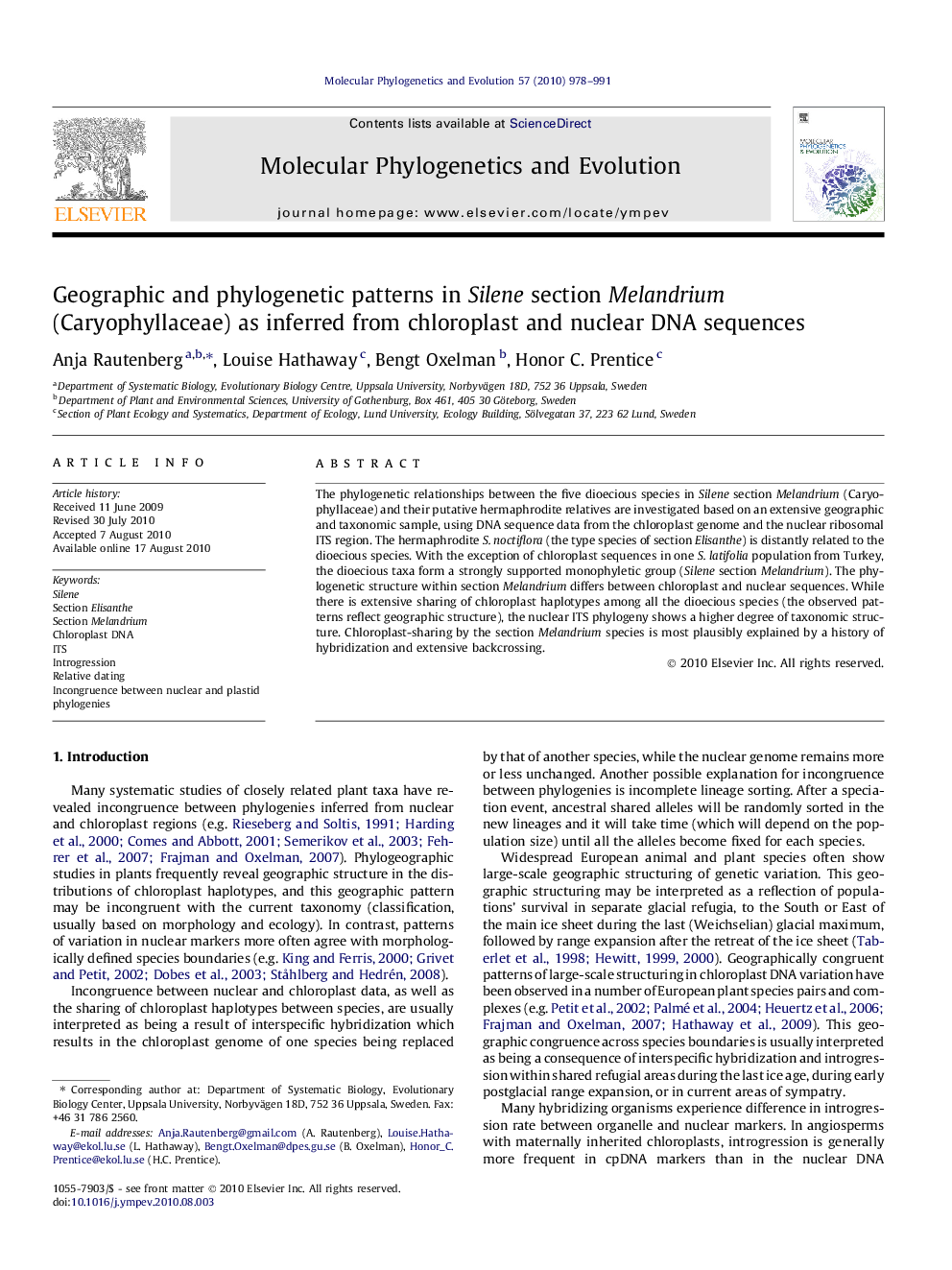| Article ID | Journal | Published Year | Pages | File Type |
|---|---|---|---|---|
| 2834247 | Molecular Phylogenetics and Evolution | 2010 | 14 Pages |
The phylogenetic relationships between the five dioecious species in Silene section Melandrium (Caryophyllaceae) and their putative hermaphrodite relatives are investigated based on an extensive geographic and taxonomic sample, using DNA sequence data from the chloroplast genome and the nuclear ribosomal ITS region. The hermaphrodite S. noctiflora (the type species of section Elisanthe) is distantly related to the dioecious species. With the exception of chloroplast sequences in one S. latifolia population from Turkey, the dioecious taxa form a strongly supported monophyletic group (Silene section Melandrium). The phylogenetic structure within section Melandrium differs between chloroplast and nuclear sequences. While there is extensive sharing of chloroplast haplotypes among all the dioecious species (the observed patterns reflect geographic structure), the nuclear ITS phylogeny shows a higher degree of taxonomic structure. Chloroplast-sharing by the section Melandrium species is most plausibly explained by a history of hybridization and extensive backcrossing.
Graphical abstractFigure optionsDownload full-size imageDownload as PowerPoint slideResearch highlights► The dioecious species in Silene section Melandrium form a monophyletic group. ► The cpDNA mainly reflects a geographic pattern. ► The nuclear ITS region shows a higher degree of taxonomic structure. ► Chloroplast sharing is most likely caused by introgressive hybridization.
